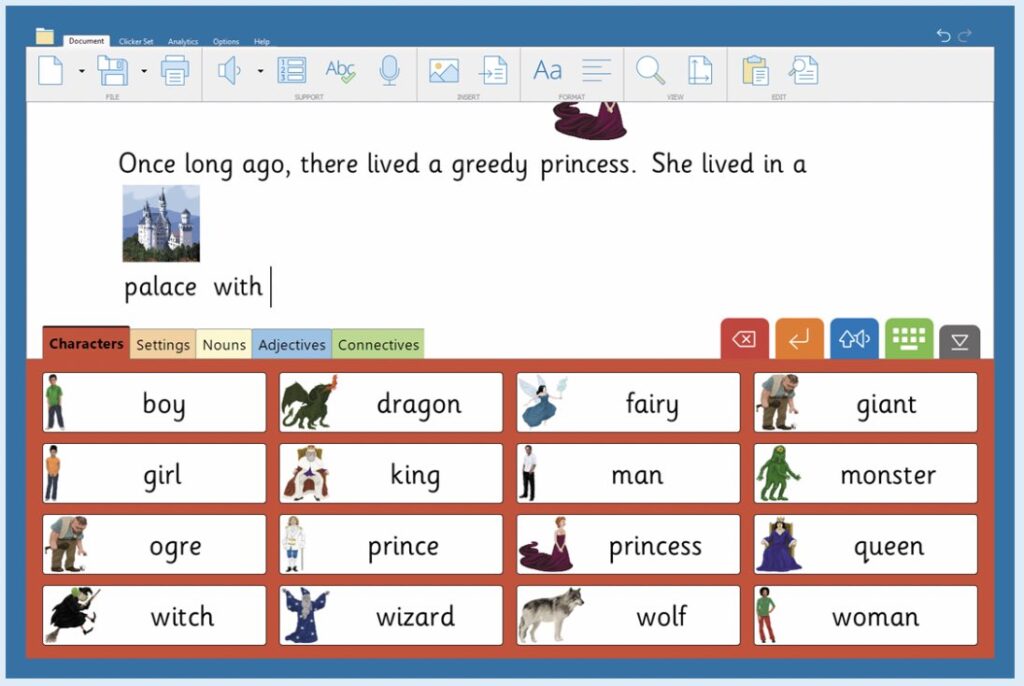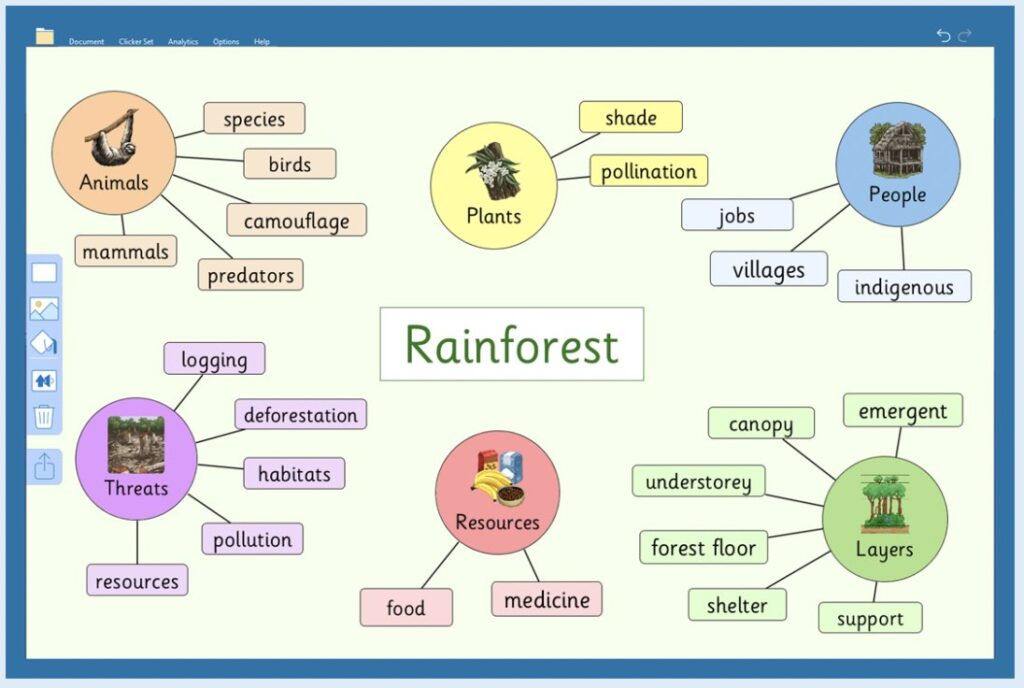Do your students see the joy in writing stories? Sharing stories is such an essential part of how we navigate the world. To help students find the joy of writing stories, you can offer them support along the way.
Regular readers of the blog know that I’m a big fan of tools that support student writers. You might remember this post from earlier this fall where I shared “How to Use Technology to Support Every Student Writer” featuring Clicker. There are many ways Clicker can support student writers this school year and help them discover the joy of writing stories.

7 Ways to Help Students Tell Stories
Today on the blog, we’ll look at seven ways you can help students find joy in writing stories. And I’ll share how Clicker can support your students along the way!
Try Oral Storytelling
One of the most common ways we share stories is by talking about them in everyday conversations. To help students find the joy in storytelling, you might ask them to share a story out loud with a partner or classmate.
Provide Story Starters
To inspire oral storytelling, you might introduce students to one of the Talk Sets inside Clicker. These Talk Sets can help students jump into an oral storytelling experience by giving them characters and settings to use in their imagined stories.
Create a Plan
In addition to using Talk Sets story starters, you can use the Story Step Boards to help students think about the connections between events in a story. Whether they use it to sequence events or consider before and after, these resources can support student writers and help them see the joy and ease of telling a great story.
Eliminate Blank Pages
As a writer myself – from blog posts to books – I know how intimidating and exciting it can be to look at a blank page. For growing writers, a blank page might feel overwhelming. To eliminate blank pages, share a Word Bank with students. The Word Bank will pop up at the bottom of a student’s page to support them as they compose a new story.
Introduce Spell Check
Some of your students may find that moving from oral storytelling to writing a story requires skills they are still developing. You may want to introduce spell check to students to help them write a story without feeling like their growing spelling skills are keeping them from telling their full stories.

Enable Predictive Tools
You may want to give students access to predictive tools. This can remove some of the barriers in flow that storytelling requires. For example, the word prediction tools will guess what word might come next in a student’s story. This can help make sure a student’s writing flow isn’t interrupted. But, of course, if you’ve used predictive text on your phone before, you already have some experience with how this technology works.
Celebrate Success
To help students stay motivated and excited about sharing stories, provide time to celebrate successes. This could include carving out time for students to share something they loved about another student’s story. Or you might spotlight every student over the course of a week to celebrate the stories they wrote or told aloud.

Note: This PDF from the team at Clicker includes even more ways to support student storytellers.
How does Clicker work?
Clicker provides students with a word-processing experience designed with learners in mind. It’s a flexible and friendly platform for cross-curricular activities. Users will also find realistic speech feedback, a talking spell checker, and a word predictor. Clicker gives students access to supporting tools that help them grow as readers, writers, and storytellers.
Ready to see Clicker in action? Use this link to book a 15-minute consultation. You can explore how Clicker works and see how it can help your young writers reach their potential this school year.







